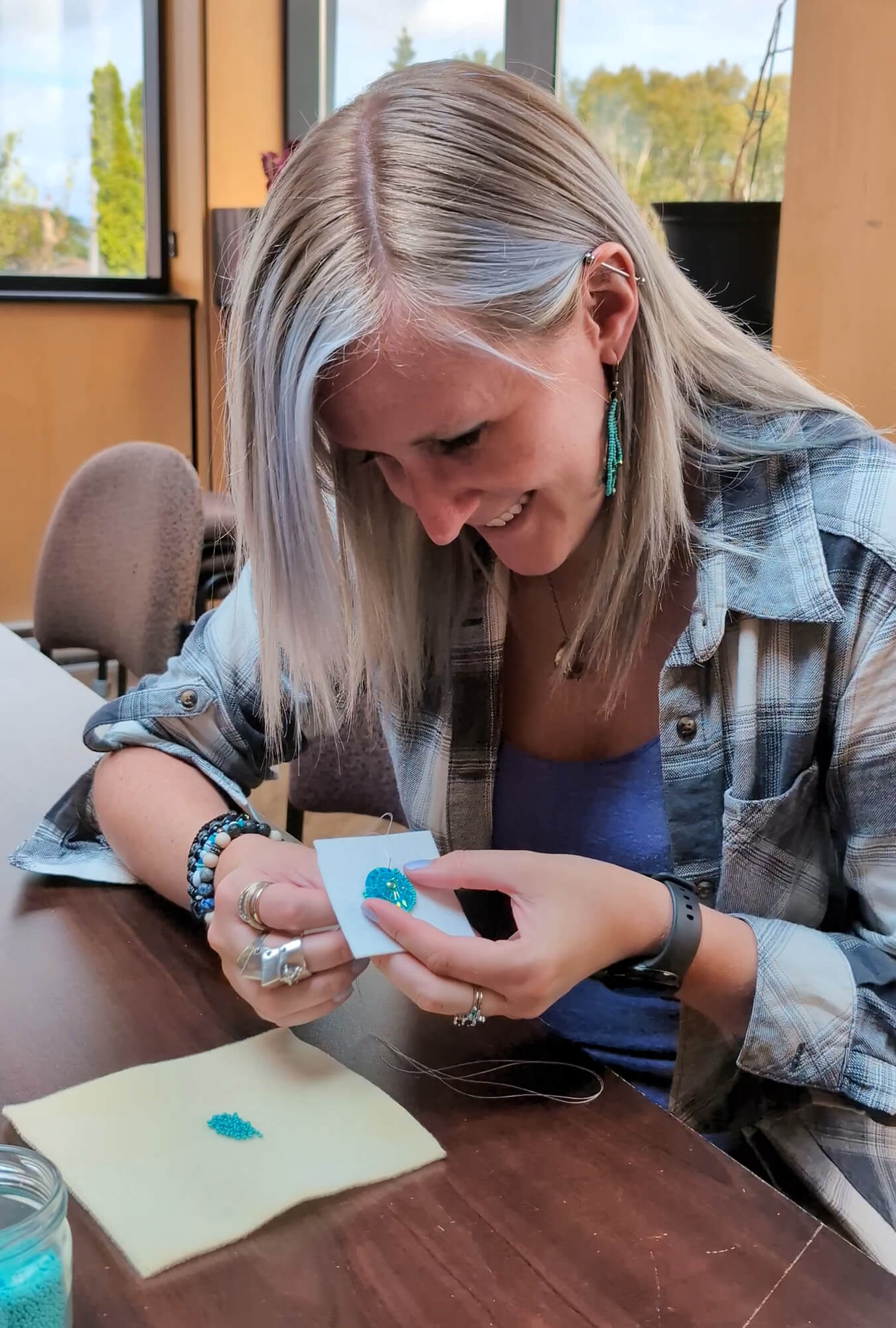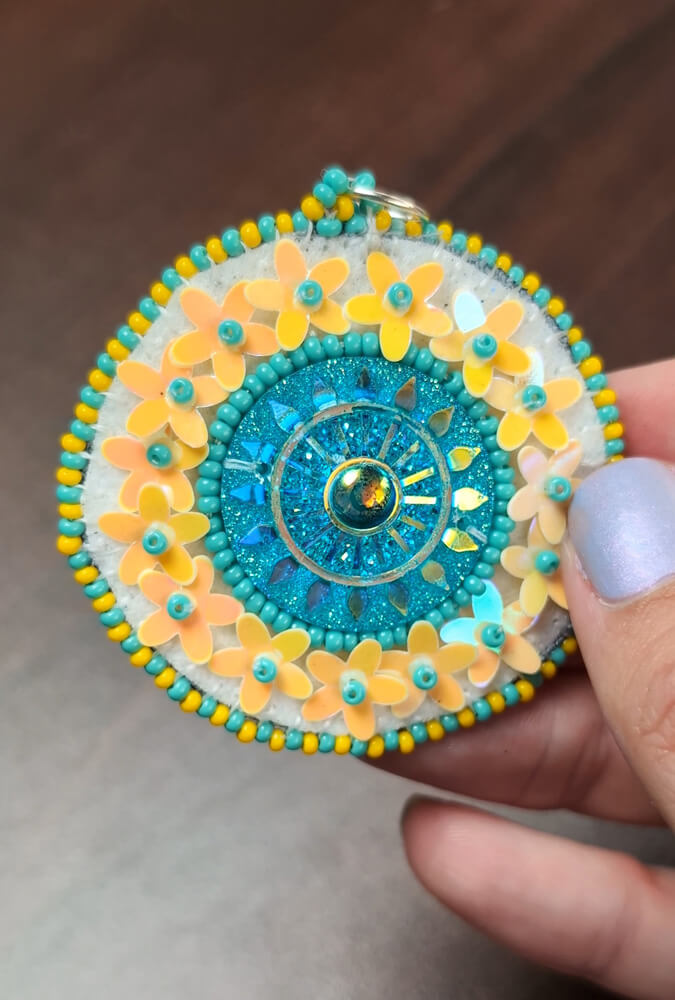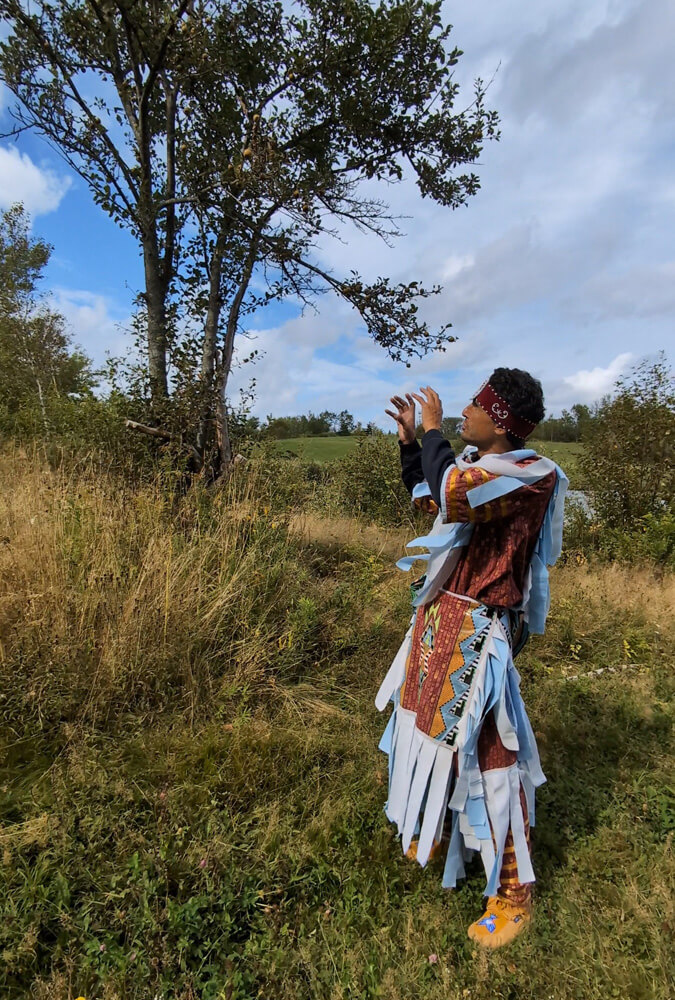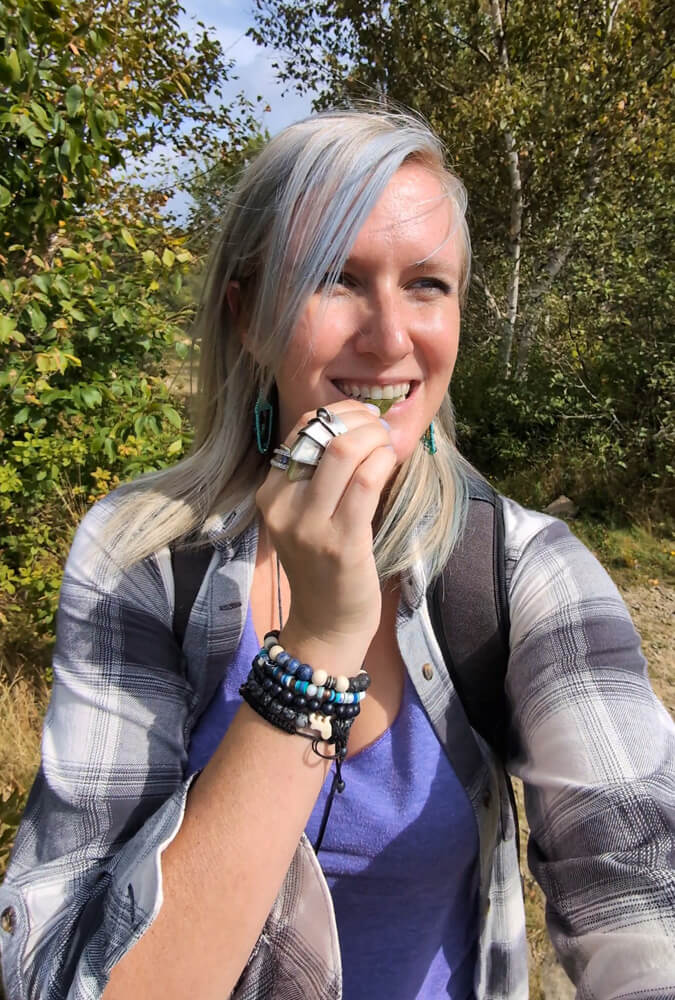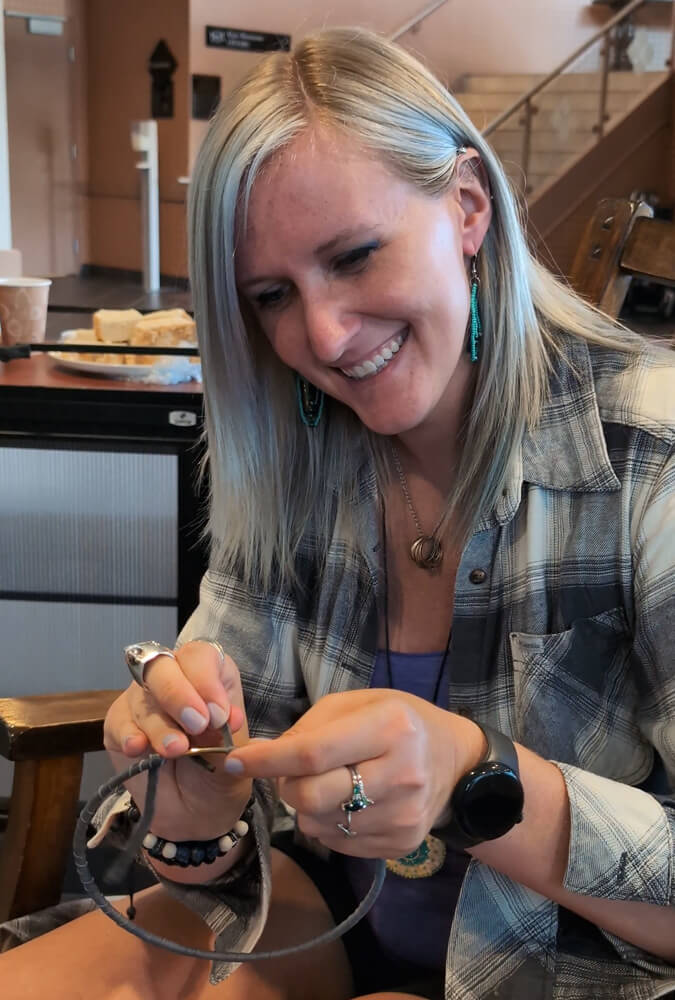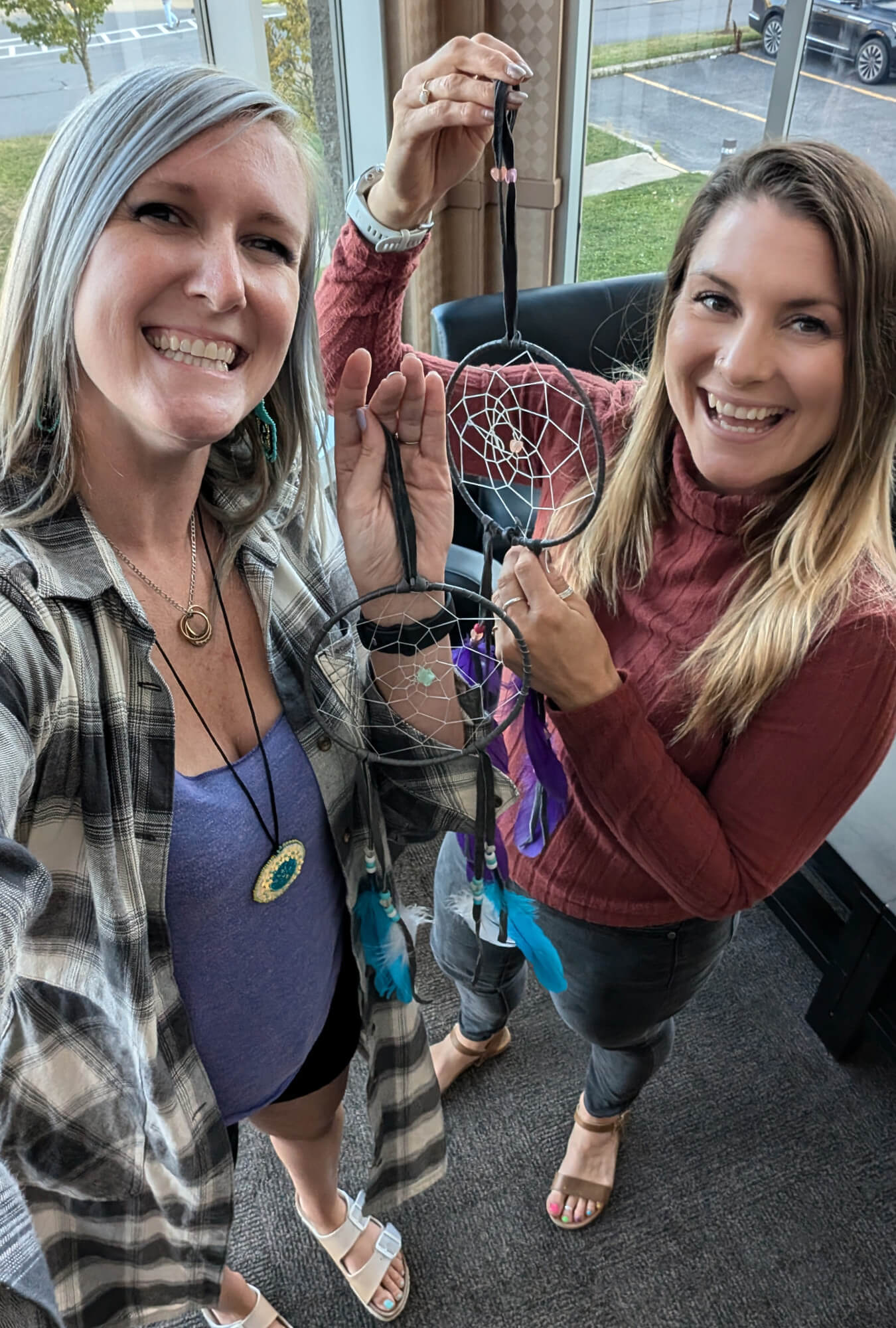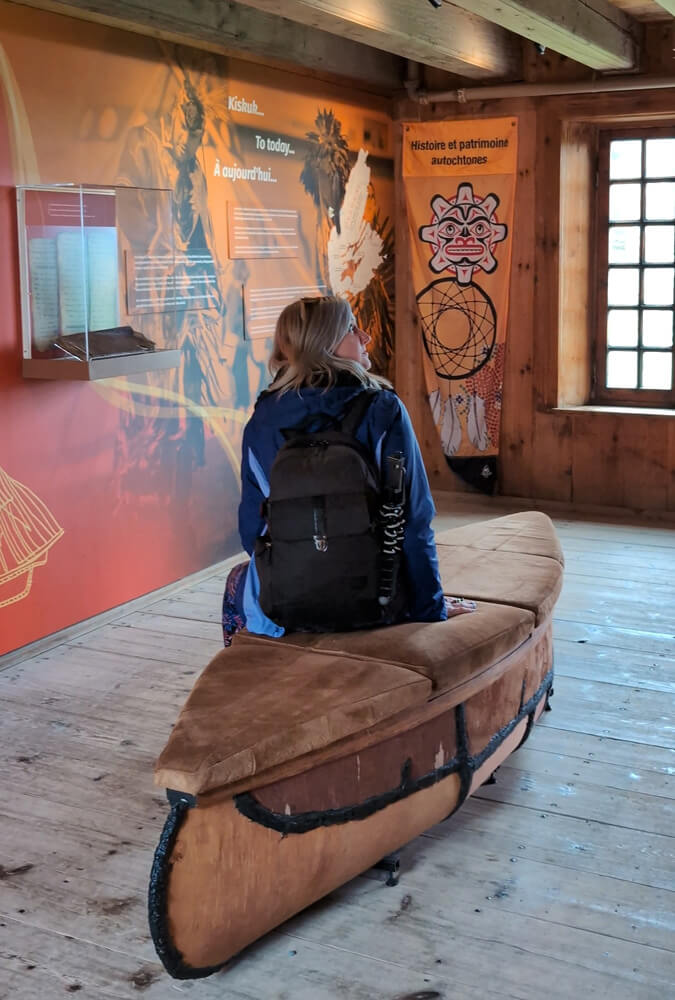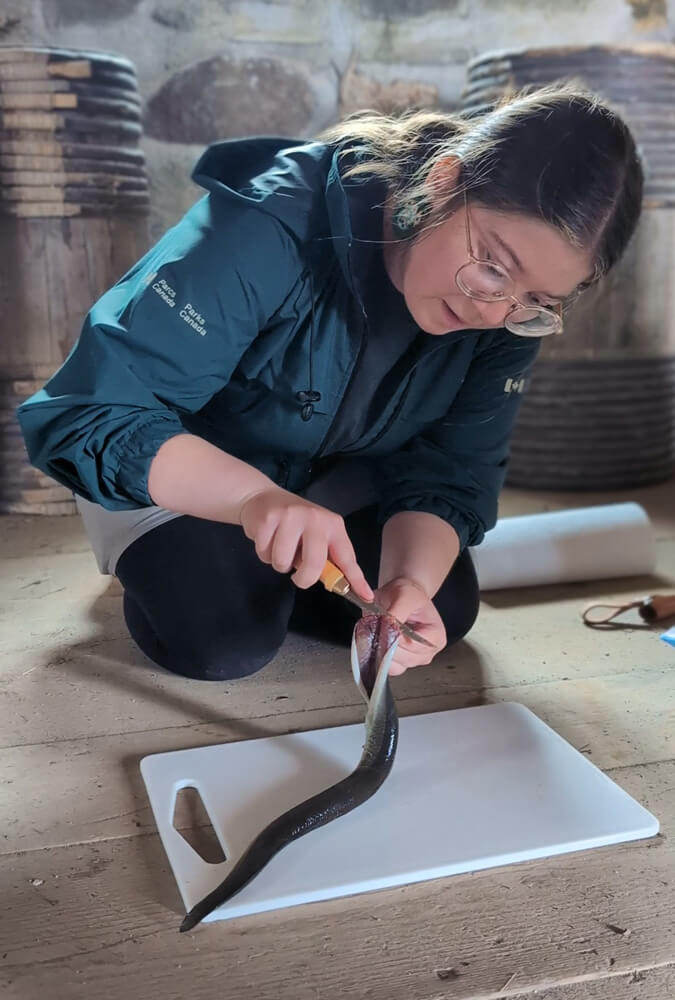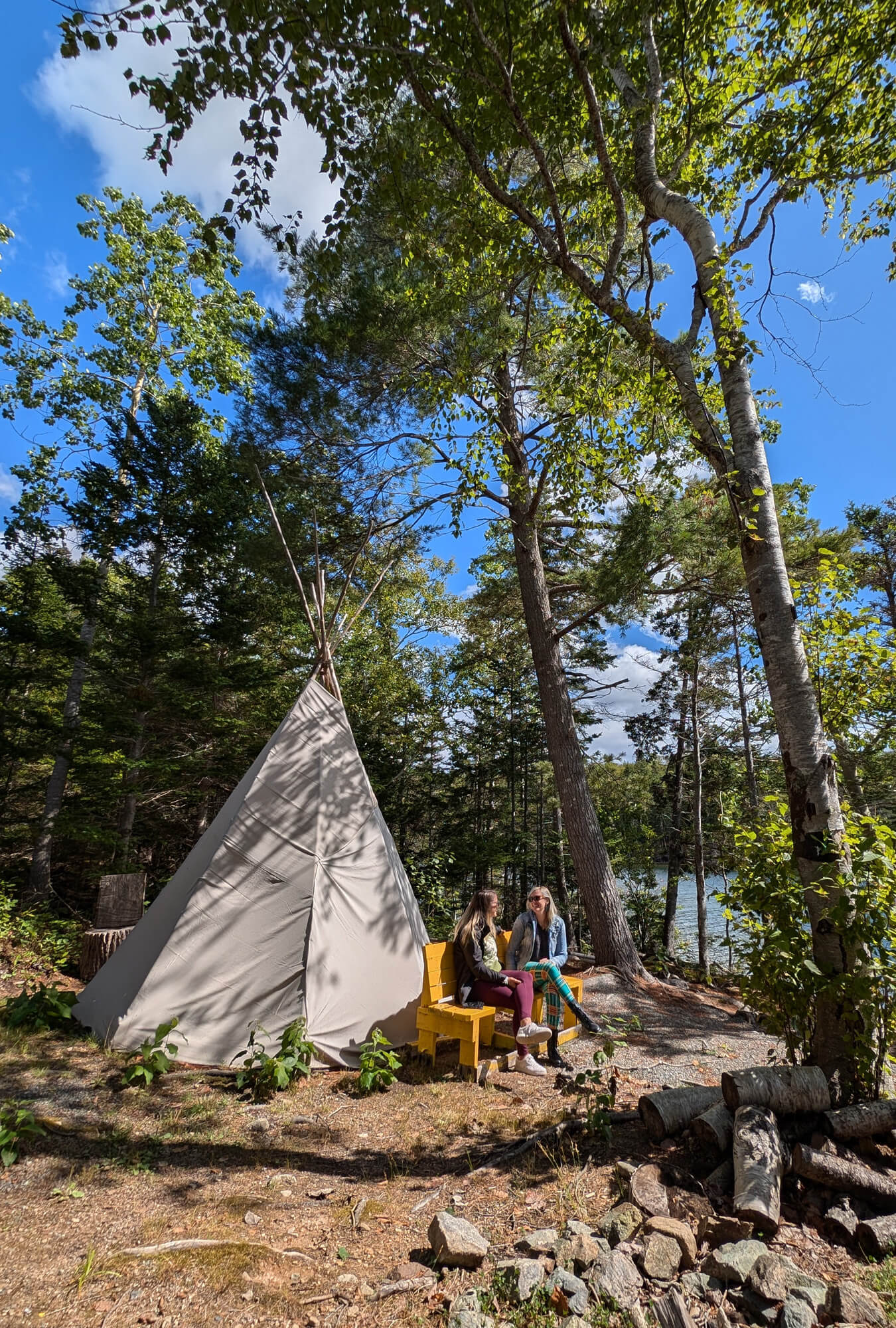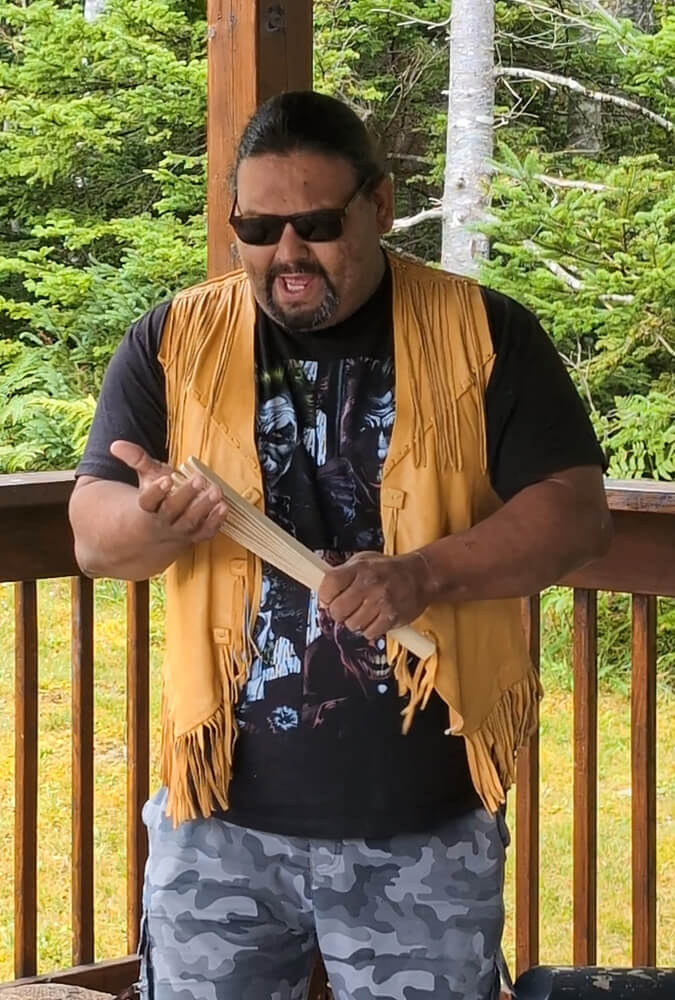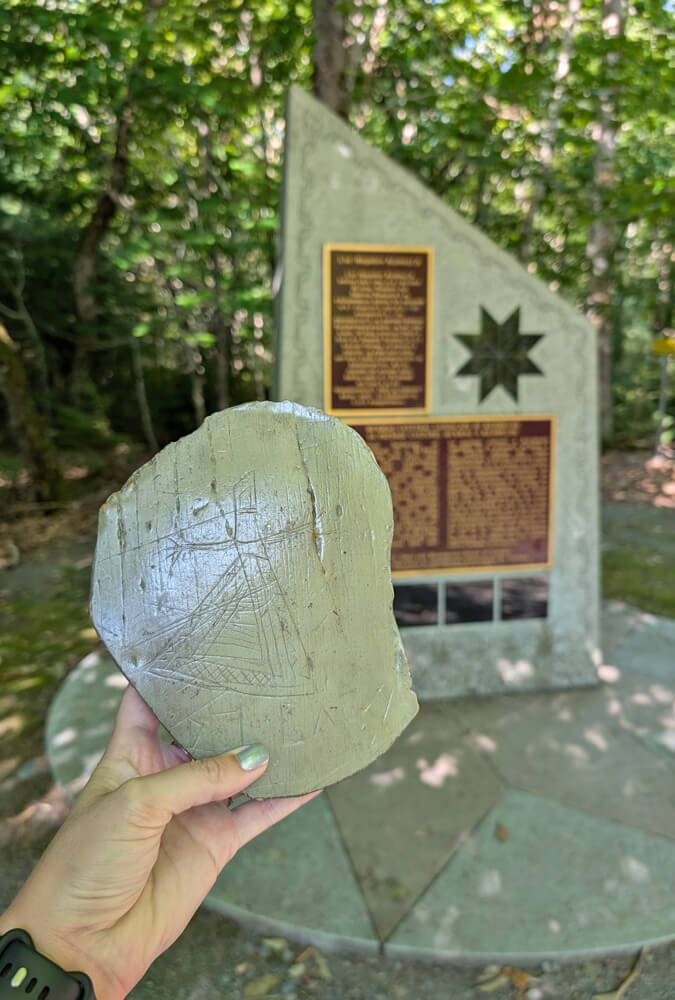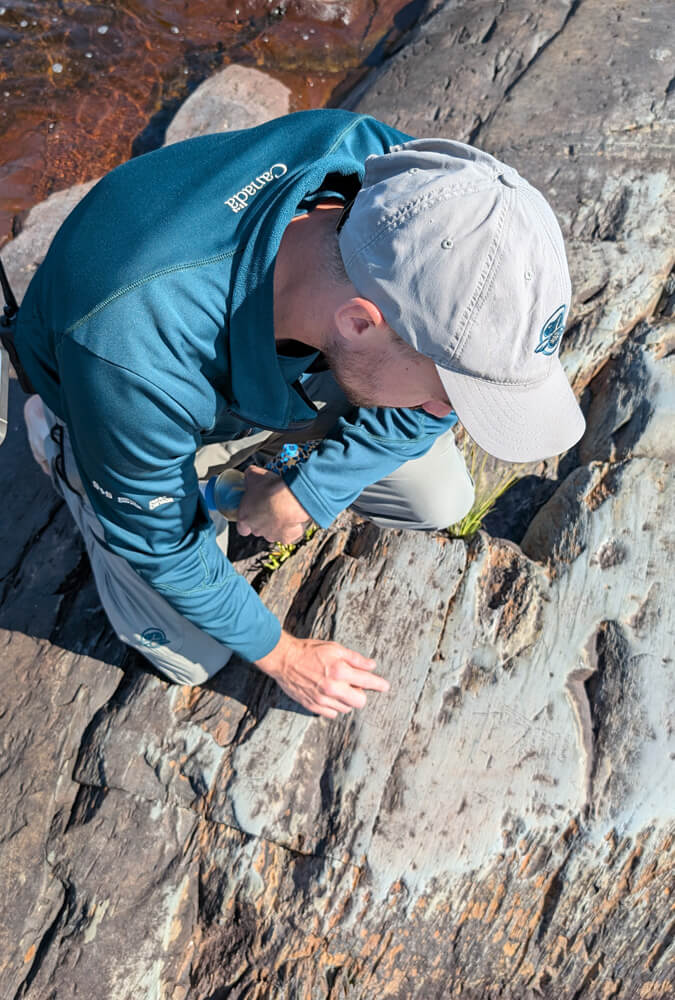The lands we now recognize as Canada have undergone various transformations over the centuries. Long before European settlers arrived, many Indigenous groups inhabited these areas, and they continue to do so today. The region we now call Nova Scotia, alongside much of New Brunswick, parts of Gaspé in Quebec, and all of Prince Edward Island, forms the traditional territory of the L’nu, now known as the Mi’kmaq (pronounced mee-guh-maw).
Nova Scotia is referred to as Mi’kma’ki, which translates to last water or land in the Mi’kmaq language. Within the province, there are 13 Mi’kmaq communities, many of which provide tourism experiences that educate both locals and visitors about their rich traditions.
Like other Indigenous cultures across Canada, the Mi’kmaq possess unique legends, histories, languages, and spiritual beliefs that are breathtakingly beautiful. When you visit Nova Scotia, I strongly encourage you to immerse yourself in their culture through these unique experiences!
Disclaimer: This post may include affiliate links, which may earn me a small commission at no extra cost to you. This helps support IBB, so thank you!
11 Ways to Experience Mi’kmaq Culture in Nova Scotia
The term ‘Mi’kmaq’ is the plural, non-possessive form of ‘Ni’kmaq,’ meaning my friends, my allies, or my family. This reflects the welcoming spirit of the Mi’kmaq, a quality that shines through in all interactions.
It was an incredible honor to engage in these experiences while collaborating with Tourism Nova Scotia. I want to remind my readers that we are guests in these spaces, so always approach them with an open mind and heart. These opportunities are a privilege, so kindly show respect throughout your visits!
To assist with planning, I’ve organized these experiences by destination. Each of these tours, workshops, and cultural venues is not to be missed, as you’ll learn so much about Mi’kmaq culture in Nova Scotia!
Some of the Exhibits at Membertou Heritage Park
Membertou First Nation
Our first destination takes us to Cape Breton Island, known as Unama’ki, meaning land of fog in Mi’kmaq. Here, you’ll find the community of Membertou, located near Sydney, the largest city on the island and a ferry terminal for those wishing to travel to Newfoundland.
Membertou is named after Grand Chief Henri Membertou, who led the Kespukwitk area throughout much of the 16th century. It is one among five Mi’kmaq communities on Cape Breton Island, and it offers various opportunities to deepen your knowledge of Mi’kmaq culture!
Explore Membertou Heritage Park
Since June 2012, Membertou Heritage Park has been dedicated to sharing the history of the community and the surrounding area, along with its traditions, across a five-acre site. Here, you can explore exhibits detailing L’sipukt (Sydney Harbour), the way of life of the Mi’kmaq before colonization, their traditions, governance structures, and much more. Notably, it also houses Canada’s largest ash basket, towering at 7 feet high!
One significant historical event showcased is the relocation of the Kuntewiktuk community, also known as the Kings Road Reserve. This vibrant community was forcibly removed in 1915 after years of pressure from European settlers, marking the first time an Indigenous community was compelled to relocate in Canadian history. You can learn more here.
- Lindz Learning to Bead
- Finished Beaded Necklace
Learn How to Bead
At Membertou Heritage Park, one of the cultural workshops available is the opportunity to learn how to bead your own earrings or necklaces. Andrea provides all the materials you’ll need to complete your project and shares valuable techniques throughout the crafting process. Engage in conversation with her as she recounts stories from the community while you get creative. It was a delightful experience, as I hadn’t crafted something by hand in such a long time!
Time flies during this two-hour workshop, which costs $25 per person, covering Andrea’s expertise and materials. You’ll also enjoy some luskinikn (Mi’kmaq bannock) with molasses, along with coffee and tea while you bead!
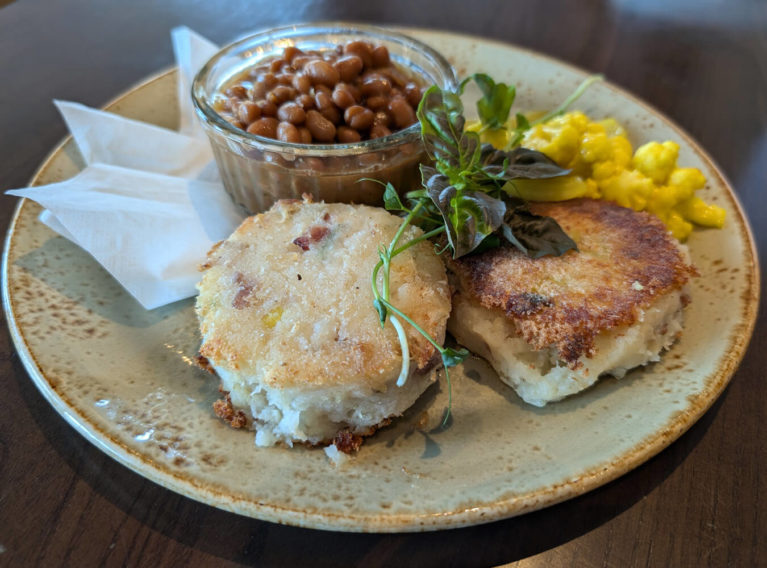
Fish Cakes at Kiju’s Restaurant
Enjoy a Meal at Kiju’s Restaurant
If you’re in search of authentic Nova Scotia flavors alongside some Mi’kmaq cuisine, look no further than Kiju’s Restaurant at the Membertou Trade and Convention Centre. The name kiju means mother in Mi’kmaq, reflecting the traditional role of Mi’kmaq women who have nourished families for generations.
The menu is crafted by local Executive Chef Shaun Zwarun, whose culinary passion began early, helping his father prepare meals for family gatherings. His dishes feature locally sourced ingredients from regional vendors and farmers, showcasing the best of the area’s cuisine.
A standout option is the Four Cent Bread Skillet, featuring traditional Mi’kmaq fry bread (luskinikn) served with an artichoke parmesan dip and sweet grass molasses. Personally, I opted for the Fish Cakes & Beans, which consist of delicious salt cod and potato patties accompanied by caramelized onions, baked beans, and green tomato chow. You can’t go wrong with their seafood chowder either!
- Cultural Ambassador David Meuse Guiding the Tour
- Lindz Snacking on Edible Plants
Take a Guided Medicine Walk
If you opt for any experience in Membertou, I highly suggest joining cultural ambassador David Meuse for a guided medicine walk.
Starting at the Membertou Trade and Convention Centre, David will take you on a brief bus tour of the area as he shares the community’s history, including a visit to its original location before relocation. Afterward, you’ll be dropped off at the Greenlink Trail where your walk will officially commence.
David is a wealth of knowledge, sharing insights on local flora and fauna and their medicinal properties. It was fascinating to learn how plants like Alder tree bark can be brewed into detoxifying tea, or how chewing on a small piece of willow can alleviate headaches akin to pain relievers. I don’t want to spoil the experience, but you’ll be amazed by the healing power of the natural world around us!
The tours are $45 plus taxes/fees, and the duration may vary based on group size and available time. Regardless of how long you spend on the medicine walk, you’ll be treated to powerful stories and songs that David graciously shares. He will even teach you some Mi’kmaq words and phrases to enhance your cultural connection! Click here to book now.
- Lindz Wrapping the Frame of Her Dreamcatcher
- Lindz & Ashlyn Holding Their Finished Dreamcatchers
Learn How to Make a Dreamcatcher
Another fantastic cultural experience at the Membertou Trade and Convention Centre is David’s dreamcatcher workshop.
David provides all the materials needed to create your own dreamcatcher and guides you step by step through the process. Traditionally, dreamcatcher frames are made from willow branches, but in this workshop, a metal hoop serves as your foundation. You’ll spend the next few hours weaving the center of your dreamcatcher while David shows you how to incorporate beads for personalization. Like the beading workshop with Andrea, you’ll enjoy luskinikn while crafting and sipping delicious blueberry tea!
The workshop lasts two hours and costs $25 per person plus taxes and fees. Click here to book now.
- Lindz Inside Building 24
- Skinning an Eel for the Mi’kmaq Demonstration
Visit the Fortress of Louisbourg
Another must-visit location in Unama’ki (Cape Breton Island) is the Fortress of Louisbourg National Historic Site. Located just 40 minutes from Membertou, it’s an easy place to spend an entire day exploring this Parks Canada site. While the focus is on the history of the original French fortress established in 1713, it also discusses the relationship between the original Mi’kmaq people and the French settlers.
While there, make sure to stop by Building 24 to learn more about this relationship and explore Mi’kmaq cultural traditions. This building was once the residence of Michel le Neuf de la Vallière, one of the first individuals to build connections with the Mi’kmaq community during his time as commandant at Port Toulouse.
Examine the exhibits within to understand the mutual respect shared between the two nations and how they celebrated this bond through annual ceremonies. You’ll find several interactive displays that allow you to touch traditional instruments and see recreations of cooking methods.
One captivating aspect I discovered was the Mi’kmaq’s decision to distance themselves from British settlers following the fortress’s final fall. This is not the first instance I’ve heard of Indigenous peoples choosing to break ties due to British rule, and it always prompts me to ponder how different history might have been had the French emerged victorious over the British.
Be sure not to miss the daily Mi’kmaq demonstration, which takes place at 1:00 PM during the summer season. During my visit, a local interpreter from Eskasoni First Nation demonstrated how eels are skinned and explained the process of turning them into leather for various uses.
- Lindz & Ashlyn Hanging Out Along the Trail
- Demonstration of a Traditional Mi’kmaq Instrument
Eskasoni First Nation
Our final destination in Unama’ki (Cape Breton Island) is Eskasoni, the largest Mi’kmaq community worldwide. The name Eskasoni derives from the term we’keistonqnik, which means where the fir trees are plentiful. For a guided tour, set your GPS to Goat Island with Eskasoni Cultural Journeys!
Situated within the Bras d’Or Lakes UNESCO Biosphere Reserve, Goat Island features a scenic 2.4-kilometer trail. Guided by Matthew, our informative tour guide, we learned about Goat Island’s history while exploring the trail with other community members. Each focused on different facets of Mi’kmaq life and culture, including traditional tools, weapons, instruments, and dances. Despite a brief rain shower during our tour, we thoroughly enjoyed the experience!
After the guided tour, I highly recommend walking the trail again, as it is lined with interpretive signs that provide additional information. Plus, there are plenty of great spots for photos that you might miss during the guided experience!
Guided tours are priced at $48 plus taxes/fees and are offered twice daily from Monday to Friday at 10:00 AM and 1:00 PM. Click here to book now and discover more available tours from Eskasoni Cultural Journeys.
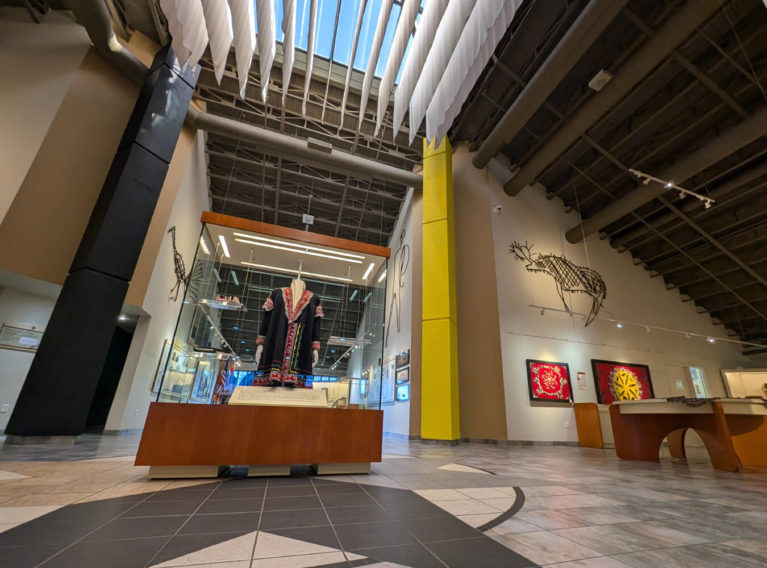
Historic Regalia on Display at the Millbrook Cultural & Heritage Centre
Millbrook First Nation
Millbrook First Nation is located near Truro, translating to end of the water’s flow in Mi’kmaq, or Wagobagitik. Within Millbrook, the Millbrook Cultural & Heritage Centre is a must-visit spot.
Explore the center to discover various exhibits dedicated to the history of Millbrook First Nation and Mi’kmaq cultural traditions. Their collection includes over 24,000 artifacts, showcasing everything from bone tools and beaded artifacts to birchbark creations. One of my favorite exhibits focused on the Mi’kmaq alphabet and pronunciation of various Mi’kmaq words.
If the Millbrook Cultural & Heritage Centre sounds familiar, you might recall a news story from early 2023. Heather Stevens, a senior heritage interpreter and the centre’s manager, worked for over a decade to reunite Mi’kmaq regalia, including moccasins, a jacket, a pipe, and a brooch. These artifacts were crafted by a woman from either Sipekne’katik or Millbrook and had been housed in Australia’s Museum Victoria for over 130 years. The remarkable condition of these pieces made their return poignant for the Millbrook First Nation. For more information, visit their website here.
The center is also home to Kluscap (Glooscap), regarded as the first human according to Mi’kmaq traditions. This mythical figure, created from a bolt of lightning striking sand, inspires many Mi’kmaq legends. In the courtyard behind the center, you can find a massive 12-meter (40-foot) statue of Kluscap, reputedly the tallest human-like statue in Canada!
- Petroglyph Replica & Mi’kmaq Monument
- Alex Showing Us Some Petroglyphs
Kejimkujik National Park
Kejimkujik National Park, derived from the Mi’kmaq word Kejimkuji’jk meaning little fairies, was created in 1968. The park safeguards a stunning old-growth forest, various rare wildlife, and vital traditional waterways for the Mi’kmaq people. Twenty-seven years later, it was designated as a National Historic Site, becoming the first national park to hold both titles.
During the warmer months, Kejimkujik National Park offers various interpretive programs that educate visitors about Mi’kmaq culture and their 4000+ years of history in the area. Be sure to stop by the visitor center to view their exhibits during your visit and check the full schedule of activities. Many tours and events require prior registration, so be sure to check the schedule here!
RELATED: Kejimkujik also has a satellite location on the opposite coast, Kejimkujik Seaside. Located near Port Joli, it’s quite different from the terrain you’ll explore here! Click here to learn more about it.
Experience the Petroglyphs
Kejimkujik National Park boasts one of North America’s largest petroglyph collections. As some of the only surviving evidence of written Mi’kmaq history, these petroglyphs have been crucial for historians and local communities in uncovering more about the region’s past.
With over 500 petroglyphs depicting various images, these are located in a restricted area accessible only via guided tours. Start at the Merrymakedge P1 parking lot and meet your guide at the Mi’kmaq Monument, where they will discuss some of the common themes represented in Mi’kmaq culture, many of which can be seen at the monument itself.
Afterward, your guide will take you along the trail to Kejimkujik Lake, where you’ll find the sacred site of the petroglyphs. It’s mandatory to remove your shoes to protect the delicate shale rock and ensure the carvings remain visible for generations to come! While there has been some vandalism before the site was fully protected, numerous significant petroglyphs representing crucial events and symbols from centuries past are still visible. You’ll be amazed to learn about the stories these images convey, connecting deeply to this spiritual site.
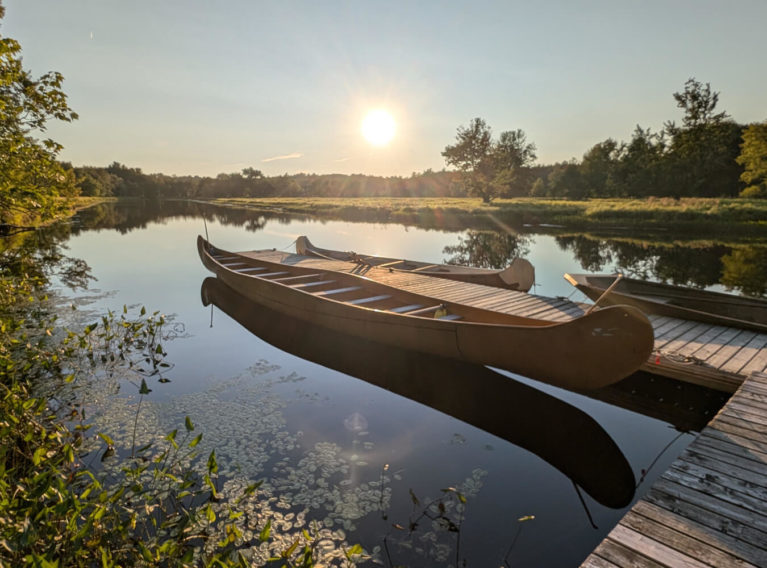
18-Person Canoe at Sunset
Big Canoe Big Sky Guided Paddle
Experience the enchanting night sky of Nova Scotia’s only dark-sky preserve from the waters of Kejimkujik Lake! Formerly known as Fairy Lake, you can bask in the magic as the stars twinkle above you.
Set out in a 18-person canoe just as the sun begins to set. As you glide along, your experienced guides will share Mi’kmaq legends that connect the sky world to the water world.
As dusk descends, you will be captivated by the constellations overhead as the Milky Way gradually unveils itself, resembling an intricate painting that dances across the night sky. Listen for fish breaking the surface, and allow the soothing calls of loons to envelop you. This experience is nothing short of magical, easily earning its place among my favorite activities in Kejimkujik National Park.
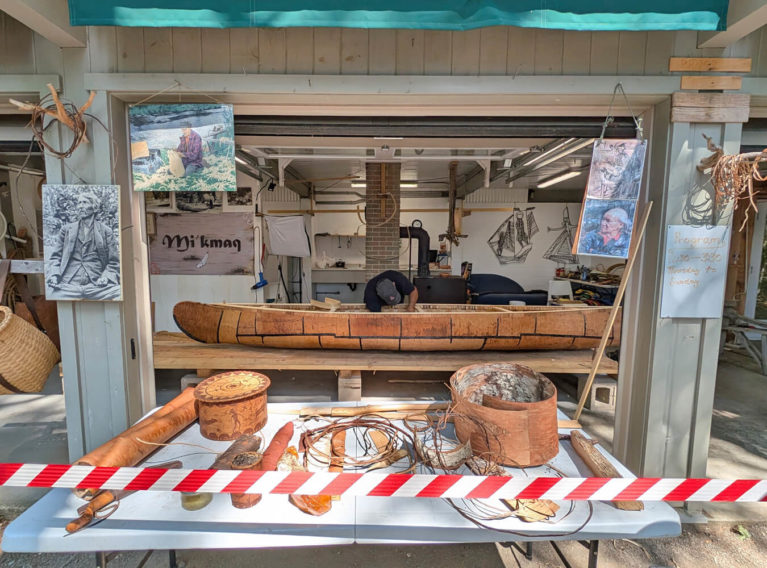
Todd Labrador at his Birch Bark Canoe Workshop
Birch Bark Canoe Building with Todd Labrador
Make your way to the southern end of Merrymakedge Beach, where you will find a discreet path leading through the forest. This route will lead you directly to Todd Labrador’s Birch Bark Canoe Shop, where you’ll witness Todd and his family diligently at work.
As one of the few remaining birch bark canoe builders in the world, Todd welcomes onlookers, allowing them to observe the canoe-making process firsthand. Stop by any time between 12:30 PM and 3:30 PM, Thursday through Sunday, and don’t hesitate to ask questions about his craft, inspiration, and experiences.
I was astounded to learn that Todd is entirely self-taught, despite canoe-making being deeply rooted in his heritage—his great grandfather also crafted birch bark canoes and baskets. Watching him add the finishing touches to a 14-foot canoe, he pointed out the unique features that distinguish a Mi’kmaq canoe, particularly which types add ocean-worthiness compared to those made for rivers and lakes. You might easily lose track of time here, captivated by his extraordinary craftsmanship!
SOMETHING TO NOTE: While Todd travels worldwide to share his craft and educate others, rumors suggest he will return to Kejimkujik National Park and Historic Site to create another birch bark canoe in the summer of 2025!
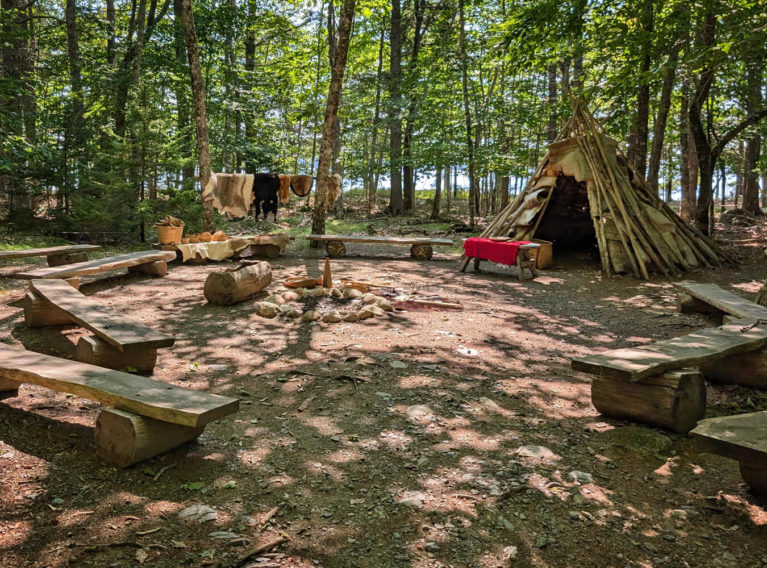
Wejisqalia’ti’k Mi’kmaq Encampment
Take a Tour of Wejisqalia’ti’k
Gain insight into the past and discover how the Mi’kmaq lived during stationary periods at Wejisqalia’ti’k, which means we grew up from the earth. This replica village showcases various aspects of everyday life. Learn the distinctions between tipis and wigwams, explore tools crafted from bone and antler before the introduction of steel and iron due to colonization, and even touch pelts from various animals traditionally used in Mi’kmaq clothing and crafts.
My favorite activity was participating in traditional Mi’kmaq games. I quickly realized my lack of coordination while attempting the hand and bone game, but I surprisingly excelled at Waltes! Similar to a dice game, it’s about flipping six coin-like objects made of caribou bone using a wooden dish to bounce them off the table. It took a few tries to master, but it becomes highly addictive once you get the hang of it! You can read the full rules of Waltes here.
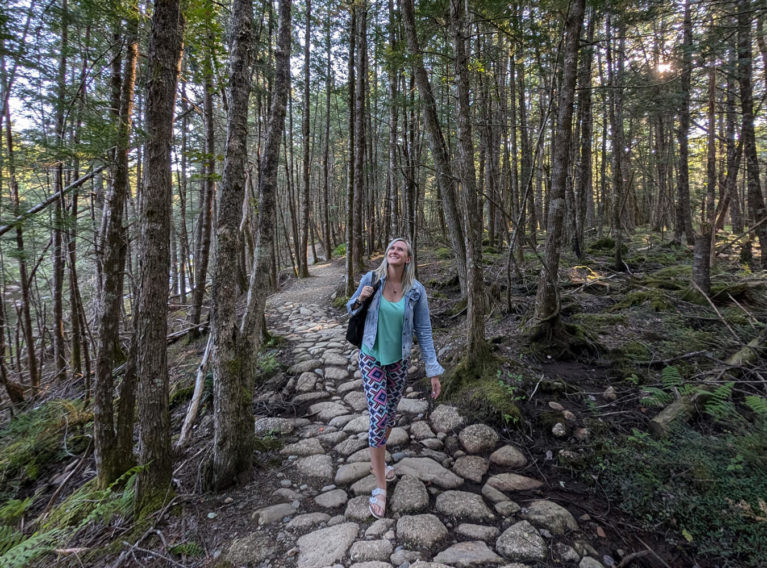
Lindz Walking Along the Ukme’k Trail
Explore the Ukme’k Trail
If you are unable to participate in any experiences during your visit to Kejimkujik National Park, you can engage with Mi’kmaq culture by exploring the park’s newest trail.
The Ukme’k Trail, translating to twisted in Mi’kmaq, stretches for 6.3 kilometers and loosely follows the Mersey River, which is part of the traditional Mi’kmaq canoe route known as Oqomkikiaq. It connects with the Slapfoot and Merrymakedge trails, creating a total of 13.5 kilometers to explore entirely on foot.
The trail features various fascinating geological elements that enhance your trekking experience. Though I only had the opportunity to walk a small portion of it, I was enchanted by the rock crossings that resembled cobblestones. Situated just northwest of Mill Falls, it truly felt like a journey into a forested wonderland!
Looking For More Indigenous Experiences in What is Now Canada?
Visit Wikwemikong & Learn The True History of Manitoulin Island
See Why Everyone Should Experience a Pow Wow
More Experiences to Learn About Mi’kmaq Culture in Nova Scotia
These are just a few ways to enhance your understanding of this beautiful culture! Numerous additional activities across the province can further your knowledge. Here are some more suggestions for your next visit to Mi’kma’ki!
Halifax Citadel National Historic Site – Enter the fortress and visit the Citadel’s newest exhibit, A City Shaped by Conflict. Here, you’ll find artwork by prominent local Mi’kmaq artist, Leonard Paul, depicting Kjipuktuk, or “The Great Harbour,” among other scenes from Mi’kma’ki.
Halifax Museum of Natural History – While undergoing renovations during my visit, some permanent displays highlight Mi’kmaq culture. Be sure not to miss This Is What I Wish You Knew, which explores Indigenous identity through the personal stories of individuals from Halifax’s urban Indigenous community.
Georges Island National Historic Site – The Mi’kmaq have been the original inhabitants of Kjipuktuk for over 10,000 years. Visit Georges Island to learn about Elpaqkwitk, meaning “water splashed on it by the waves,” which served as an important gathering spot for the Mi’kmaq and a harvesting area before, during, and long after European settlers arrived.
Grand-Pré National Historic Site – Although this site primarily honors the resilience of the Acadians, it also presents the harmonious relationship between the Acadians and the Mi’kmaq. Discover how, in 1680, the Acadians were welcomed as they collaborated with the Mi’kmaq to build a system of dikes to reclaim marshlands into arable land. Read more here.
Looking for More Nova Scotia Content?
Don’t Miss Out on This Epic Road Trip from Halifax to Yarmouth
Check Out All The Great Things to Do in Yarmouth & The Acadian Shores
Disclaimer:
This article was created in partnership with Tourism Nova Scotia; however, all content and opinions expressed are honest and represent my personal experiences.


